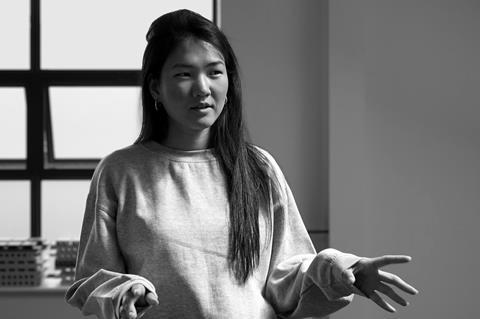Women still face barriers to entry and advancement within the profession, writes Urna Sodnomjamts

International Women’s Day has its origins in the women’s rights movements of the late 19th and early 20th centuries. An annual celebration to commemorate, reflect upon, platform and share stories of women’s achievements and their continued fight for equality in all areas of life. For architects, today provides an opportunity to consider the changing role of women in the profession.
For most of the profession’s history being an architect meant being male. Men were the masterminds of city planning, sky-scraper technicians, and arbiters of beauty. The image was of a white, middle-class male professional who was knowledgeable and authoritative.
The architecture industry continued as a male bastion for most of the 20th century. There was no conception of “women in architecture”, and women in the field were a marginalised group often discriminated against, excluded and dismissed.
In the transition period between the 20th and 21st centuries, one woman, Zaha Hadid, stood out as a prominent figure of female success in the male-dominated industry. Still, she largely stood alone, much like the “starchitects”, her achievements portrayed as a one-woman show.
The 1990s “starchitect” image was a problem of its own for many women because of the way in which it underplayed the true collaborative nature of the profession and marginalised the role of the team. But in one sense Hadid did conform to a more familiar experience that most women at the time could relate to: “yes, I was the only woman at the meeting”.
Many female architects today are prioritising social change through their work
Although we rightly celebrate her brilliance and status as a role-model, Hadid’s stratospheric success meant in some ways she felt detached from the experiences of many younger women architects. Today, have we moved beyond the time of the starchitect and being the only woman at the meeting?
I hope so. Architecture is at its best when it is collaborative, socially responsible, sustainable, and environmentally aware, with the support of technology and creativity. Many female architects today are prioritising social change through their work. Here are a few:
- Pascale Sablan is a Haitian-American architect and founder of the design firm Beyond the Built Environment.
- Mariam Kamara is a Nigerien architect and founder of the firm Atelier Masomi and a founding member of the African Design Centre.
- Julia King is a British architectural designer, academic and advocate for women, diversity and inclusivity in architecture. She is director of the Apprenticeship Programme in City Design at LSE Cities and won the Emerging Woman Architect of the Year award in 2014.
There is growing recognition of the importance of socially responsible architecture among professionals in the industry and the general public. As clients and developers become more attuned to the benefits of sustainable and socially responsible design, there is likely to be greater demand for architects and designers who can deliver on these principles.
But can women architects be hopeful for the industry at all stages in their life?
Women in architecture often present a different style of practice that prefaces collaboration rather than singular genius. In practice, I am now not the only woman at the meeting, and the variety of architectural women in the industry has enhanced my experience in the workplace. Here are some highlights from last week:
- Last Tuesday, I attended a talk at RIBA, and two of the three speakers on stage were women. They presented the pioneering projects they led, which were innovative in terms of retrofit and social progression.
- Last Thursday, I had a client meeting led by a female client.
- Last Friday, I attended technical consultant workshops at the University of Westminster, and 50% of the consultants were women in the industry; a practice founder, a structural engineer, a waterworks advisor/technician and myself.
- Today, I practise with more women than men at multiple levels; associates, senior architects, architects, Part 2s and Part 1s.
But can women architects be hopeful for the industry at all stages in their lives? It’s 8th March 2023 and I am eight years into architecture; at this point in my journey, it feels like a crucial time to write an article on a subject I have been consciously and unconsciously investigating for many years.
According to one 2020 survey, women in the UK architecture industry earn, on average, 16% less than their male counterparts
In 2019-2020, women comprised 45% of all students studying architecture at the postgraduate level. But despite the growth of representation in the industry, women continue to be under-represented in practice. According to the Royal Institute of British Architects, women comprise around 30% of registered architects. This figure drops to 26% for those working in senior roles.
These disparities suggest that women continue to face barriers to entry and advancement in the profession and are less likely to remain in the field after completing their studies. According to one 2020 survey, women in the UK architecture industry earn, on average, 16% less than their male counterparts.
To personally reflect on these statistics, I look at myself. I live in a house share, and the four of us studied masters together; two males and two females. Having had the same eight years in architecture, I earn less than the males, and the other female is moving towards a focus on interiors. Why?
It seems that we still have some way to go in terms of delivering on the aspirations of our 19th and 20th century forebears.
Happy International Women’s day.
Postscript
Urna Sodnomjamts is a Part 2 architectural assistant at dMFK
















No comments yet